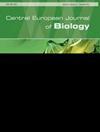Anti-Cancer Effects of Trigonella foenum in Neuroblastoma Cell Line
引用次数: 0
Abstract
Objective: Current approaches focus on the use of natural compounds in plants in the treatment of cancer. Trigonella foenum (Fenugreek) is mainly used in medicine, food, and cosmetics due to its bioactive and aromatic compounds. Many compounds with medicinal effects are found in Fenugreek seeds. These compounds have been demonstrated to be effective on numerous cancer cells. Neuroblastoma is one of the most common extracranial solid malignancies in children. In our study, the effects of Fenugreek on cell cytotoxicity, cell damage, migration, and sphere formation in neuroblastoma cells were investigated. Materials and Methods: The powder extract was dissolved in DMEM and filtered to prepare a stock solution of Fenugreek. We used MTT assay for the detection of cytotoxic effects of Fenugreek on SH-SY5Y cells, crystal violet staining for the analysis of morphological change in cells, wound healing test for the cell migration analysis, and agarose gel electrophoresis for detecting DNA damage. We created a spheroid to test the effect we observed in 2D culture, in 3D culture as well. Results: The findings of our study showed that Fenugreek treatments caused significant reductions in cell proliferation and migration capacities in 2D neuroblastoma cells at IC 50 (1500 μg/ml) doses, respectively. In addition Fenugreek changed cell morphology and increased DNA fragmentation. Furthermore, Fenugreek caused disruption of 3D spheroid formation of SHSY-5Y cells in a dose- and time-dependent manner. Conclusion: The determination of the anti-cancer effect of Fenugreek on neuroblastoma cancer may be a useful and feasible intervention in neuroblastoma patients in the light of further studies and with the help of new nano drug delivery systems.泡沫三角铃菌对神经母细胞瘤细胞系的抗癌作用
目的:目前的研究重点是利用植物中的天然化合物治疗癌症。葫芦巴(葫芦巴)因其具有生物活性和芳香化合物,主要用于医药、食品和化妆品。在胡芦巴种子中发现了许多具有药用作用的化合物。这些化合物已被证明对许多癌细胞有效。神经母细胞瘤是儿童最常见的颅外实体恶性肿瘤之一。在我们的研究中,胡芦巴对神经母细胞瘤细胞的细胞毒性、细胞损伤、细胞迁移和球体形成的影响进行了研究。材料与方法:将粉末提取物溶于DMEM中,过滤后制成胡芦巴原液。我们采用MTT法检测胡芦巴对SH-SY5Y细胞的细胞毒作用,结晶紫染色分析细胞形态变化,伤口愈合试验分析细胞迁移,琼脂糖凝胶电泳检测DNA损伤。我们创造了一个球体来测试我们在2D培养和3D培养中观察到的效果。结果:我们的研究结果表明,在IC 50 (1500 μg/ml)剂量下,葫芦巴分别显著降低了2D神经母细胞瘤细胞的增殖和迁移能力。此外,葫芦巴改变了细胞形态,增加了DNA片段化。此外,胡芦巴还以剂量和时间依赖性的方式破坏了SHSY-5Y细胞的三维球体形成。结论:进一步研究胡芦巴对神经母细胞瘤肿瘤的抗癌作用,在新的纳米给药系统的帮助下,对神经母细胞瘤患者进行干预可能是一种有用的、可行的方法。
本文章由计算机程序翻译,如有差异,请以英文原文为准。
求助全文
约1分钟内获得全文
求助全文

 求助内容:
求助内容: 应助结果提醒方式:
应助结果提醒方式:


